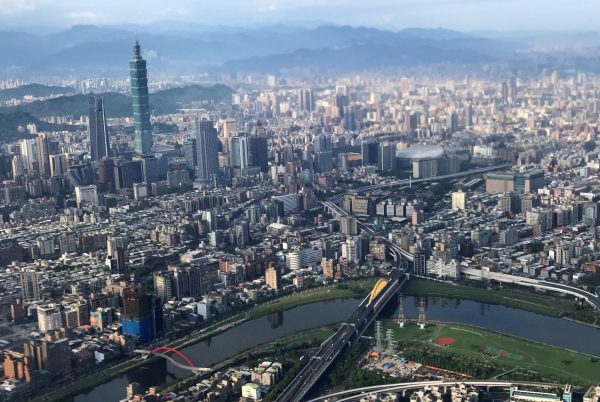In January–June 2019, Taiwan’s exports to China and Hong Kong shrank by 8.8 per cent compared to the same period in 2018. In comparison, Taiwan’s exports to the United States grew by 17.4 per cent. Overall exports declined by 3.4 per cent during the same period. As a result, China’s share in Taiwan’s total exports declined from 41 per cent in 2017 to less than 39 per cent in the first half of 2019. China’s falling significance was balanced by the growth of exports to the United States from 12 per cent to 14 per cent during the same period.
Taiwan’s decreasing investment in China explains the shrinking exports to the country. Although China remains Taiwan’s largest outward investment destination, its importance has dropped to 37 per cent in the first half of 2019 from its peak of 84 per cent in 2010.
Taiwan’s decreasing investment in and export to China has been caused by China’s transformation towards a more consumption-based economy. The growing trade dispute between the United States and China has accelerated the shift in Taiwanese investment away from China. In 2016, 8 out of the top 10 US-bound exporting companies in China were Taiwanese firms.
Taiwan’s declining investment in China did not boost its investment in developing countries in Southeast Asia as China and Southeast Asia are within the same supply chain networks — Southeast Asian countries supplied raw material and intermediate goods for final assembly in China. Trade interdependencies mean that Taiwanese firms’ withdrawal of their factories from China might negatively impact their investment in Southeast Asia.
Some Taiwanese firms choose to invest at home in the face of US trade retaliation against Chinese products. From January–June 2019, the total return on investment from China amounted to over NT$440 billion (about US$14 billion). This considerable return sustained Taiwan’s economic growth despite falling exports.
The Taiwanese government tried to reduce Taiwan’s investment in China before in the 1990s but the result was not fruitful. The opening of US markets to Chinese goods following US–China reconciliation underpinned export-oriented investment in China. As most Taiwanese exports produced by Taiwanese firms in China are destined for the US market, Taiwan has transmitted its economic reliance on the United States to intermediary China.
Unlike president Lee Teng-hui (1988–2000), president Chen Shui-bian (2000–2008) realised the prohibition only resulted in extensive hidden investment that the government could not control. He then adopted a relatively open economic policy towards China. When Ma Ying-jeou took office in 2008, he opened Taiwan’s economy a step further to China as he believed greater cross-strait economic integration would rescue Taiwan’s ailing economy.
Ironically, Taiwan’s investment in China started to decrease and its exports to China also became stagnant during Ma’s administration (2008–2016). China’s rising wages and stricter rules for environmental protection explained diminishing investment from Taiwan. China’s industrial upgrading further reduced its demand for intermediate goods from Taiwan. Beyond weak global demand, Taiwan’s wearying investment-driven exports to China also explained its bleak economic performance.
Unlike Ma, current President Tsai Ing-wen vowed to revitalise the economy through diversifying economic relations after she took office in 2016. This comes in the wake of China’s economy facing downward pressure exacerbated by the worsening investment environment and prolonged US–China trade tensions. Tsai’s policy of economic diversification may succeed because it complements the current US economic policy towards China as well as China’s economic structural changes.
The future of Taiwanese investment remains largely contingent upon US–China relations. A complete shift of its supply chain network from China to other countries seem unlikely in the short term. Given China’s huge population, the China market-oriented firms may continue to stay.
US President Donald Trump’s plan to bring manufacturing back to the United States may also delink the traditional US–Asia economic connections where Asia produces and the United States consumes. If Trump succeeds then the China-centred regional production network will radically change.
Alternatively, Trump may fail to revive US manufacturing as it has lost its comparative advantage in producing labour-intensive manufactured goods, and the US trade deficit may remain large.
Taiwan will have to maintain its comparative advantage through continuous innovation that demands long-term financial commitments. Greater government spending on research and development is imperative. More industrial cooperation with advanced countries could also facilitate Taiwan’s innovation. This will rely on Taiwan’s continuous effort to improve its judicial system’s efficiency in relation to intellectual property rights.
Min-Hua Chiang is Research Fellow at the East Asian Institute, the National University of Singapore.

